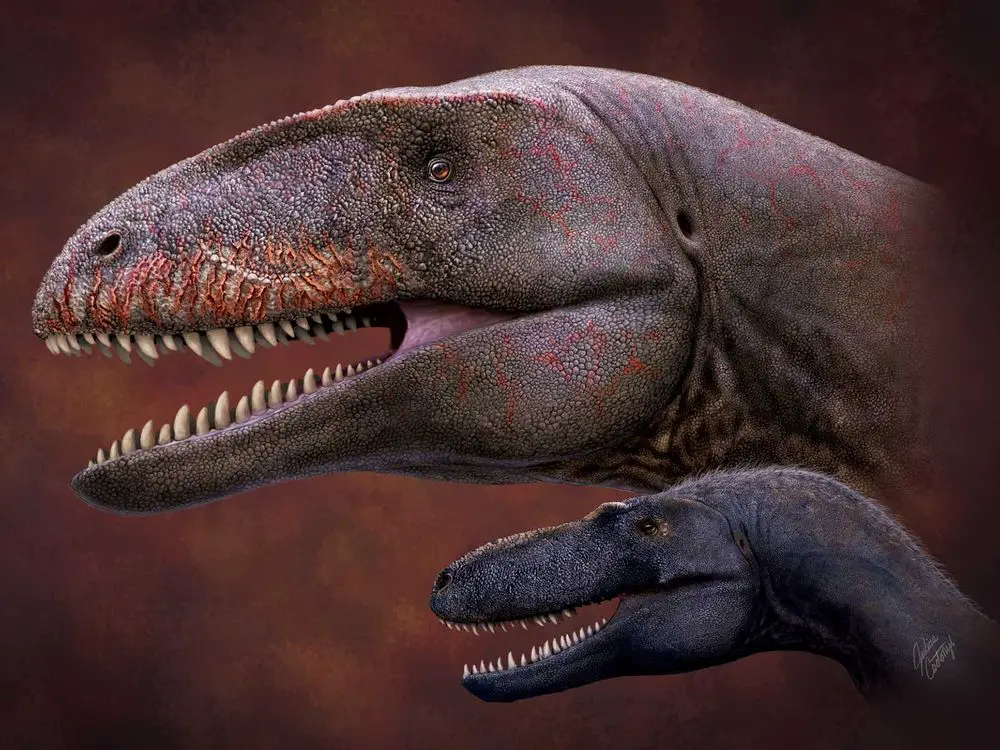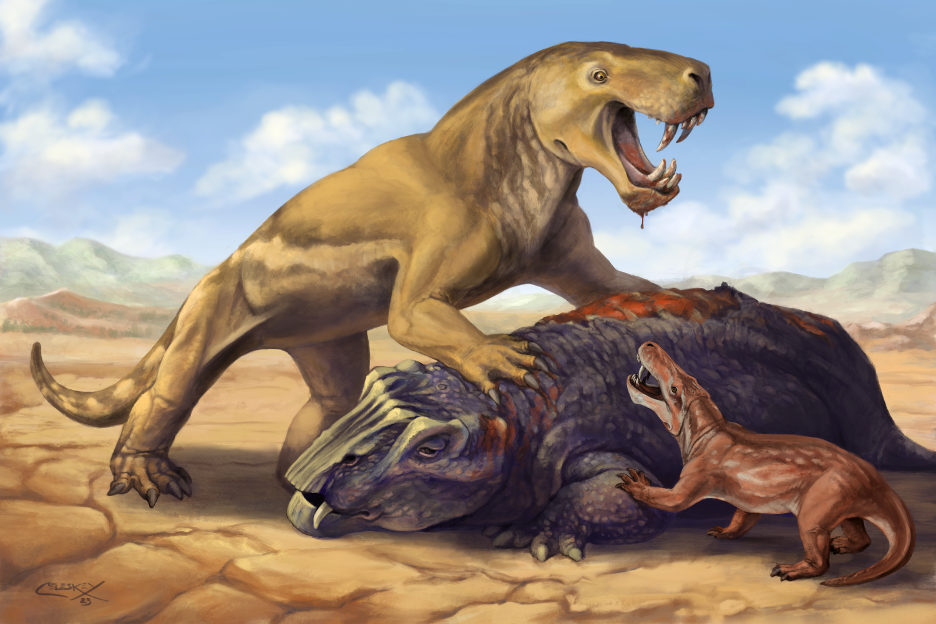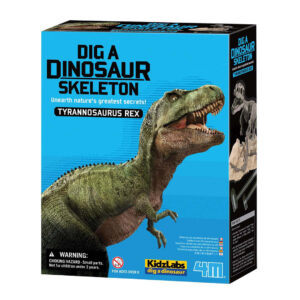Which Dinosaur was Apex Predator? Unveiling the Giants!
The Tyrannosaurus Rex was the apex predator during the late Cretaceous period. This massive dinosaur dominated its ecosystem with unparalleled strength and ferocity.
Dinosaurs have long captivated our imagination, and among these prehistoric giants, the Tyrannosaurus Rex stands out as a symbol of raw power. Known for its colossal size, fearsome jaws, and predatory instincts, the T-Rex ruled its territory with an iron fist.
Researchers believe this creature could consume up to 500 pounds of meat in a single bite, illustrating its role as a dominant force in its habitat. Its impressive build and reputation as a skilled hunter have made the T-Rex a subject of extensive study and popular interest, securing its legacy as the ultimate prehistoric predator. Perfectly adapted for hunting, the T-Rex’s keen senses and robust physique enabled it to thrive until the end of the dinosaur era.

Ancient Earth’s Fearsome Predators
Imagine a world where giant lizards ruled the land. The ancient Earth was just that. Fierce creatures like dinosaurs roamed freely. They were the ultimate predators of their time.
The Era Of Dinosaurs: A Time Of Titanic Beasts
The Mesozoic Era saw the rise of dinosaurs. This time spanned over 180 million years. It’s split into three periods: Triassic, Jurassic, and Cretaceous.
- Triassic Period: Small, fast predators emerged.
- Jurassic Period: Bigger, stronger dinosaurs dominated.
- Cretaceous Period: T-Rex and others reached peak size and power.
Traits Of Apex Predators: Dominating The Food Chain
Apex predators stood atop the food chain. They had distinct traits that put them there. Powerful jaws, sharp claws, and incredible speed were their tools.
| Trait | Function |
|---|---|
| Sharp Teeth | Ripping flesh |
| Long Legs | Chasing prey |
| Great Size | Intimidating rivals and prey |

Credit: phys.org
Tyrannosaurus Rex: The Tyrant King
The Tyrannosaurus Rex, often called T. Rex, stirs the imagination with its infamous reputation. This iconic dinosaur embodies the term “apex predator.” T. Rex roamed North America 68 to 66 million years ago during the late Cretaceous Period.
Physical Prowess Of T. Rex
The T. Rex had a massive body, powerful legs, and a skull designed for maximum biting force. With bones thick as steel and muscles built for hunting, this predator’s physique was nothing short of awe-inspiring. Here’s a glimpse into the physical attributes that made T. Rex formidable:
- Length: Up to 40 feet (12 meters) long
- Height: Standing 15 to 20 feet (4.5 to 6 meters) tall
- Weight: Weighing an estimated 5 to 8 tons
- Teeth: 60 large, serrated teeth, some as long as 9 inches (23 centimeters)
How T. Rex Reigned Supreme In Its Habitat
The T. Rex dominated its ecosystem, outmatching other large carnivores in strength and agility. This predator utilized its sense of smell, sharp eyesight, and fearsome bite to track and subdue prey.
| T. Rex Feature | Impact on Prey |
|---|---|
| Robust legs | Chasing down fast-moving targets |
| Huge jaws | Delivering a bone-crushing bite |
| Sharp vision | Spotting prey from afar |
| Keen sense of smell | Tracking scents over long distances |
Youthful T. Rex may have been agile hunters. Adults could have been both predators and scavengers. No other dinosaur matched the Tyrant King’s raw power and command over its territory.
Spinosaurus: The River Monster
Imagine a giant, fierce dinosaur lurking in ancient rivers. We’re talking about the mighty Spinosaurus. With its crocodile-like skull and massive sail on its back, this creature was unlike any other dinosaur. Some believe that it was the apex predator of its time, ruling the wetlands and rivers it called home.
Massive Size And Strength
The Spinosaurus was enormous, one of the largest carnivores to walk the Earth. But size isn’t all; it had specific traits that made it an aquatic hunter. With a body designed for swimming, this dinosaur could move through water with ease.
- Webbed feet for better propulsion.
- Long, powerful tail to navigate river currents.
- Crocodile-like snout with pressure sensors to detect prey.
A Unique Diet
Spinosaurus fed on fish, a trait not common in other large predators. Its conical teeth were perfect for gripping slippery prey. Imagine it as a massive, prehistoric stork, catching fish in its long jaws.
Different Hunting Grounds
Unlike the T-Rex, the Spinosaurus chose rivers over forests for hunting. Their realms hardly overlapped. While dinosaurs like T-Rex dominated the land, Spinosaurus was the king of rivers.
Competition With Other Predators
Even with other predators around, the Spinosaurus had little competition. Its specialization in aquatic environments meant it had its own niche. Land-based carnivores typically avoided taking the plunge into Spinosaurus’ territory.
This incredible dinosaur showcased a fascinating mix of adaptations. The Spinosaurus truly was a river monster, a one-of-a-kind predator that may have been the apex predator in its ecosystem.
Giganotosaurus & Carcharodontosaurus: The Southern Giants
Meet the Giganotosaurus and Carcharodontosaurus, two massive dinosaurs. These giants roamed the southern lands. Their size and strength made them feared. They were the dominant predators of their time.
Sizing Up The Southern Hemisphere’s Champions
The Giganotosaurus and Carcharodontosaurus were huge. They were longer than a basketball court. Some scientists think they weighed more than 13 elephants! They had long, sharp teeth. These dinosaurs stood tall on two legs. They were skilled hunters.
| Dinosaur Name | Length (Feet) | Estimated Weight (Tons) |
|---|---|---|
| Giganotosaurus | 43 | 8 |
| Carcharodontosaurus | 44 | 7.5 |
Comparing Hunting Strategies And Prey
Giganotosaurus may have hunted in packs. They likely chased large plant-eaters. Carcharodontosaurus might have been a loner. It used its sharp teeth to cut meat. Both used speed and powerful bites to catch prey.
- Pack vs. Solo: Giganotosaurus hunted together; Carcharodontosaurus hunted alone.
- Prey: They hunted large dinosaurs like sauropods.
- Hunting Method: They used their size and teeth to dominate.
Unsung Apex Predators
The dinosaur era witnessed many fearsome predators. Among these giants, some lesser-known dinosaurs reigned supreme. Their tales of dominance are less told. Let’s explore these Unsung Apex Predators who ruled their respective realms and challenged the clichéd hierarchy of prehistoric predators.
Other Contenders For The Top Spot
While the T-rex often steals the limelight, other dinosaurs were just as formidable in their time. Fierce competitors such as the Spinosaurus, with its sail-like back and crocodile-like jaws, thrived in the waterways. The Giganotosaurus, with its size rivaling the T-rex, was another top contender.
- Spinosaurus: Semi-aquatic, powerful jaws, and clawed hands.
- Giganotosaurus: Larger than T-rex, apex predator in South America.
- Carcharodontosaurus: Sharp teeth, keen hunter, dominant in North Africa.
Regional Dominators Across Prehistoric Landscapes
Each region had its own king. Different dinosaurs dominated different parts of the world. From the swift-footed carnivores in the plains of North America to the armored killers in the forests of Asia, a wide range of species held the title of apex predator.
| Region | Dinosaur | Features |
|---|---|---|
| North America | Allosaurus | Agile, sharp claws, hunted in packs |
| South America | Argentinosaurus | Massive size, heavy tail, deterrent to predators |
| Europe | Neovenator | Advanced senses, fast, top European predator |
| Asia | Tarbosaurus | Strong bite, T-rex’s closest relative, ruled Mongolia |

Credit: m.economictimes.com
The Fall Of The Gigantic Predators
Imagine a world where colossal beasts ruled the land. The most fearsome of all were the apex predators, dinosaurs at the top of the food chain. Their reign, however, was not eternal. A series of catastrophes reshaped life on Earth, signaling the fall of these gigantic predators.
Extinction Events: The End Of An Era
The age of dinosaurs ended with a bang. Scientists believe a massive asteroid struck Earth. This event led to drastic changes. It caused widespread fires, cooling of the Earth, and loss of food sources. As a result, dinosaurs could not survive. This event is known as the Cretaceous-Paleogene (K-Pg) extinction event.
- Volcanic eruptions also played a part.
- Severe climate change followed.
- Food chains collapsed.
Dinosaurs, along with 75% of Earth’s species, disappeared. This paved the way for mammals and eventually, humans, to dominate.
The Legacy Of Dinosaurs In Modern Ecosystems
The loss of dinosaurs left a lasting impact. The void filled in by different organisms led to the diversity we see today. Though these great predators are gone, their relatives still fly among us. Birds are living dinosaurs, a link to the prehistoric past. They play crucial roles in our ecosystems:
| Bird Role | Impact in Ecosystem |
|---|---|
| Pollinators | Support plant reproduction |
| Scavengers | Keep environment clean |
| Predators | Control insect populations |
This legacy of the dinosaurs is vital for healthy ecosystems. It helps maintain the balance of nature. By studying birds, we learn about our planet’s history and evolution. Dinosaurs may be gone, but they continue to influence life on Earth.

Credit: www.fieldmuseum.org
Frequently Asked Questions For Which Dinosaur Was Apex Predator
Who Was The Dinosaur Apex Predator?
The apex predator among dinosaurs was likely the Tyrannosaurus rex. This massive carnivore dominated Late Cretaceous ecosystems.
Which Dinosaur Was The Ultimate Predator?
The Tyrannosaurus rex is often considered the ultimate predator among dinosaurs, due to its massive size and powerful build.
What Is The Largest Apex Predator Dinosaur?
The largest apex predator dinosaur was the Spinosaurus, reaching lengths of up to 59 feet.
Was The Giganotosaurus A Apex Predator?
Yes, the Giganotosaurus was an apex predator, dominating its ecosystem due to its large size and carnivorous diet.
Conclusion
Exploring the realm of prehistoric giants, we’ve uncovered fascinating insights about the dominant predators of their time. The Tyrannosaurus rex stands tall as a formidable contender for the apex predator crown, its legacy echoing through eons. Engaging with our past deepens our understanding of nature’s ever-evolving tapestry, inviting us to keep questioning and discovering.




